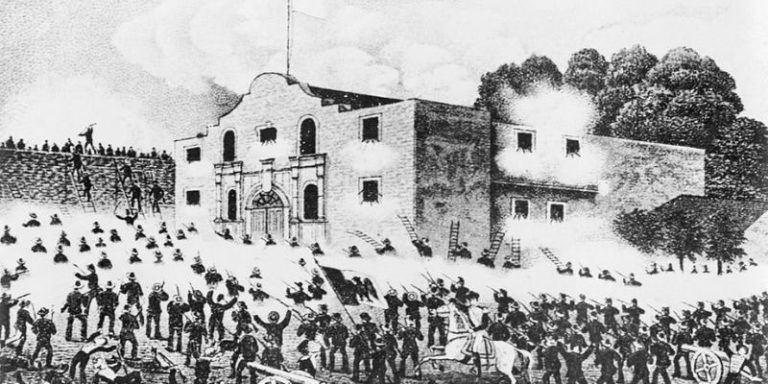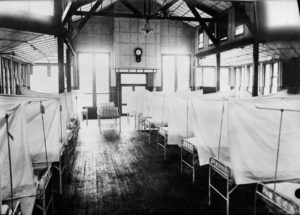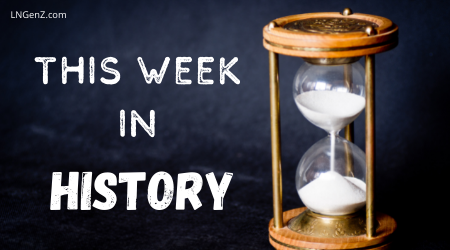This Week in History: March 6-12
Remember the Alamo and Spanish Flu lands in America.
By: Kelli Ballard | March 6, 2022 | 639 Words

(Photo credit Getty Images)
“History develops, art stands still.” ~ E.M. Forster
March 6, 1836: Remember the Alamo
In the 1800s, the area that would become Texas was trying to gain its independence from Mexico. The Battle of the Alamo is a famous skirmish that lasted 13 days, from February 23 to March 6, 1836. A group of volunteer Texans were occupying Fort Alamo, which used to be a Franciscan mission located near today’s San Antonio.
On February 23, a Mexican force consisting of thousands of soldiers led by General Antonio Lopez de Santa Anna, started a siege of the fort. The Alamo was commanded by James Bowie and William Travis, and even famous frontiersman Davy Crockett was there. The 200 men were able to thwart the Mexican army for just under two weeks before finally being overpowered on March 6.
They were able to win back Fort Alamo a year later, but the small group of volunteers’ resistance inspired the people, and the cry of “Remember the Alamo” later became popular during the Mexican-American War of 1846-1848.
March 11, 1918: The Spanish Flu

Red Cross House at U.S. General Hospital #16, during Influenza Epidemic, New Haven, Connecticut (Photo by: Universal History Archive/Universal Images Group via Getty Images)
On this day, the Spanish Flu first reached America. In Fort Riley, Kansas, 107 soldiers became sick. Although people have compared today’s COVID pandemic to the Spanish Flu, the 1918 sickness took more lives than World War I, which was also happening at the time.
Today we have much more advanced medicine and medical technology to combat viruses and other diseases. Hygiene was not a top priority then, and many times nurses and attendants didn’t even wash their hands when going from patient to patient. In the U.S., 500,000 people died from the virus while worldwide the toll reached 22 million by the end of 1920.
Other Notable Mentions
March 8, 1863: Confederate Colonel John Mosby, during the Civil War, was the leader of Mosby’s Rangers and managed to capture Union General E.H. Stoughton at his headquarters in Fairfax County Courthouse, Virginia.
March 10, 1864: Ulysses S. Grant became a Lieutenant General and the commander of the Union armies.
March 11, 1941: During World War II, America’s allies needed weapons and other essentials. President Franklin D. Roosevelt, under the Lend-Lease program, began sending ships, planes, food, clothing, and other supplies to the British. “We must be the great arsenal of democracy,” he said about the program.
March 12, 1888: The Great Blizzard of ’88 hit the northeastern parts of the U.S. It lasted for 36 hours with more than 40 inches of snow in New York City.
March 12, 1994: The Church of England ordained 32 women as its first female priests. A protest broke out and 700 male clergy members as well as thousands of church members, left to join the Roman Catholic Church where women priests were not allowed.
March 12, 1999: Poland, the Czech Republic, and Hungary became full members of NATO.
Famous Birthdays
Michelangelo (March 6, 1475) was born in Caprese, Italy. The famous painter, poet, architect, and sculptor is best known for his sculpture David and his painting on the ceiling of the Sistine Chapel.
 Stephen Hopkins (March 7, 1707) was born in Providence, Rhode Island. He was the governor during colonial times and was also a signer of the Declaration of Independence.
Stephen Hopkins (March 7, 1707) was born in Providence, Rhode Island. He was the governor during colonial times and was also a signer of the Declaration of Independence.
Yuri Gagarin (March 9, 1934) was born in Gzhatsk, Russia. On April 12, 1961, he became the first human in outer space. This started the race to space, and President John F. Kennedy promised an American would land on the moon before the end of the 1960s.
Claire Boothe Luce (March 10, 1903) was born in New York City. From 1943 to 1947, she served in the House of Representatives and became the first woman to be appointed as a U.S. ambassador to a major country, which happened to be Italy.
















